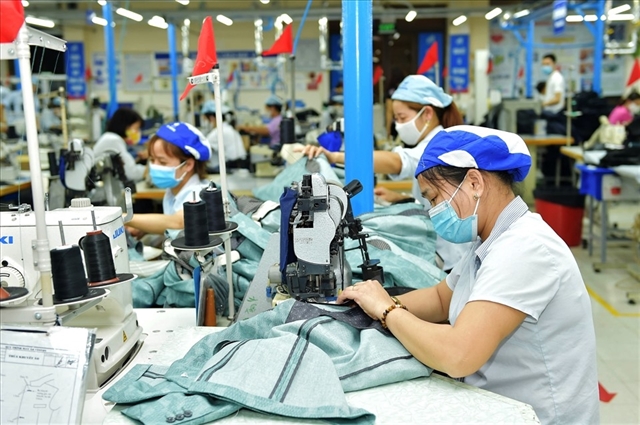
HÀ NỘI — Việt Nam is a key beneficiary of the Regional Comprehensive Economic Partnership (RCEP), which entered into force on January 1, 2022 and creates the world’s largest free trade area, according to Standard Chartered Bank in its latest Global Research Report titled: “Việt Nam – RCEP: Opportunities and challenges”.
The deal is expected to eliminate about 90 per cent of tariffs on trade between the signatories within 20 years.
The membership in the pact further strengthens Việt Nam’s trade position and should contribute to the post-pandemic recovery this year. Major export categories that are expected to benefit from the RCEP include IT, textiles, footwear, agriculture, automobile and telecommunications. Over the longer term, the deal could form the basis for a new supply chain in the region, with Việt Nam playing a key role. The country targets average export growth at 6-7 per cent a year from 2021-30.
“The RCEP should boost Việt Nam’s exports and improve its access to large consumer markets including China, Japan, South Korea and Indonesia. The pact should lower costs for producers in Việt Nam and give them access to supply chains that extend across the Asia-Pacific region; most of the input materials for Việt Nam’s exports are sourced from RCEP countries,” said Tim Leelahaphan, Economist for Thailand and Việt Nam, Standard Chartered.
“SMEs – which account for 98 per cent of all enterprises in Việt Nam and contribute 40 per cent of GDP – are poised to benefit as the pact provides opportunities for them to move up the value chain.”
However, Việt Nam is also likely to face more competition – both in export markets and domestically – as a result of RCEP. For exports, the pact increases competition from other Southeast Asian countries, some of which are strong in similar product categories to Việt Nam (such as labour-intensive goods). Over time, this could prompt Việt Nam to move into high-tech manufacturing. RCEP should facilitate this process, making it easier to source high-quality materials from other member countries and improving market access for higher-value-added goods.
More broadly, the RCEP is likely to accelerate China’s economic integration with the rest of the Asia–Pacific region; in contrast, the US is not an RCEP signatory. Việt Nam will continue to benefit from its role as an alternative manufacturing hub as companies adopt a ‘China plus one’ diversification strategy. At the same time, however, China’s low-cost products will gain better access to Việt Nam’s domestic market under RCEP, posing potential challenges to domestic competitors.
Standard Chartered Bank’s economists expect a strong current account (C/A) surplus and FDI flows to remain the key pillars of support for the Vietnamese đồng (VNĐ) over the long run. The RCEP is likely to further boost Việt Nam’s exports, supporting the C/A balance, and help attract increased direct investment flows.
“The sum of Việt Nam’s C/A balance and net direct investment has averaged a sizeable US$19 billion annually over the past nine years. Given this strong basic balance, we expect the Vietnamese đồng to remain on an appreciation path in the coming years. We forecast USD-VNĐ at 22,500 by end-2022 and 22,000 by end-2023,” said Divya Devesh, Head of ASA FX Research, Standard Chartered Bank. — – VnExpress News
- Reduce Hair Loss with PURA D’OR Gold Label Shampoo
- Castor Oil Has Made a “Huge” Difference With Hair and Brow Growth
- Excessive hair loss in men: Signs of illness that cannot be subjective
- Dịch Vụ SEO Website ở Los Angeles, CA: đưa trang web doanh nghiệp bạn lên top Google
- Nails Salon Sierra Madre
 VnExpress News The News Gateway of Vietnam
VnExpress News The News Gateway of Vietnam




